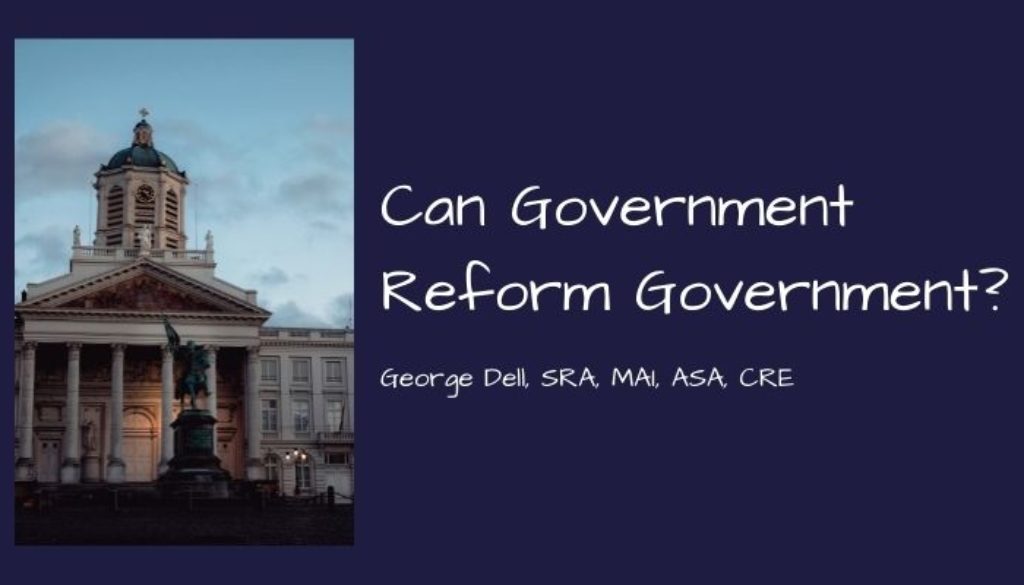Reform? What is the real problem? We know of meltdowns. We hear of bias. And we see the “American Dream” may be just a dream. So what about government? Why?
And what part might appraisals play in these issues?
More importantly, what keeps us from implementing solutions?
Can government agencies (such as FFIEC and the FHFA) solve these problems? Or is government the problem? As so often happens, it can be both. Let’s briefly look at the major players, including non-profit independent groups such as the Appraisal Institute, American Society of Appraisers, and the government-subsidized Appraisal Foundation. We must also include the 54 “state” regulators which control appraiser licensing, and approving education.
The “reform” topic is vast and complex. Recall that in the US, an appraisal is a valuation done by an appraiser – required for “federally related real estate transactions.”
The actual requirements are influenced by “established” practices, embedded expectations, regulations, education, standards, client pressure, and bias (both personal and analytic bias).
- Established practice is built around sparse, paper-based data, and personal market familiarity, instead of instant, complete, internet downloadable information. The focus is on personal selection of four to six ‘comparables’ relying on the appraiser’s experience.
- Appraisal standards (Appraisal Foundation) perpetuate two obsolete requirements:
- An appraisal must be an “opinion” rather than an analytic result;
- The result is a point value, with no reliability measure.
- State fees for approval of education is effectively prohibitive for modernized methods. To teach one class with one teacher requires about 120 separate individual forms, at a dollar cost of near $7000, and an administrative overhead of at least one half-time employee to interact and renew applications roughly every two years with each state. This redundant ‘approval’ nightmare is estimated to absorb 30% to 50% of the income of a new offerings.
- Client pressure, including AMCs (Appraisal Management Companies) emphasize speed and low price in place of suitable reliability and risk assessment.
- Curriculum emphasizes the traditional “pick comps, make adjustments” paradigm. The traditional ways are “time tested”, simple to write (regurgitate), and can be sold cheaper.
- Client expectations, reinforced by Appraisal Foundation publications specify that an adequate scope of work is sufficient when meeting ‘peers actions’, and client expectations. This standards requirement effectively injects the old obsolete 1930’s methods into the big data reality.

- GSE’s (Government Sponsored Enterprises – FannieMae and FreddieMac) and their guides and forms effectively control the residential appraisal process. These too reinforce the obsolete “point-value-opinion” which tends to prohibit the introduction of true reliability/risk scoring of individual appraisals. This also precludes integration of macroeconomic variables, leading economic indicators, and the ability to provide real-time update valuations for portfolio and risk management functions.
- Appraisers are required to pay for education and publication standards, practices, licensing, and the AMC (Appraisal Management Companies) ‘cut’ of fees, paid by the consumer.
It is a large task to upturn these institutional-cultural inertias. Is it possible a government function can move our housing function toward the public trust? The core value must align personal motive (at all levels) with the public good. Can government reform government?
